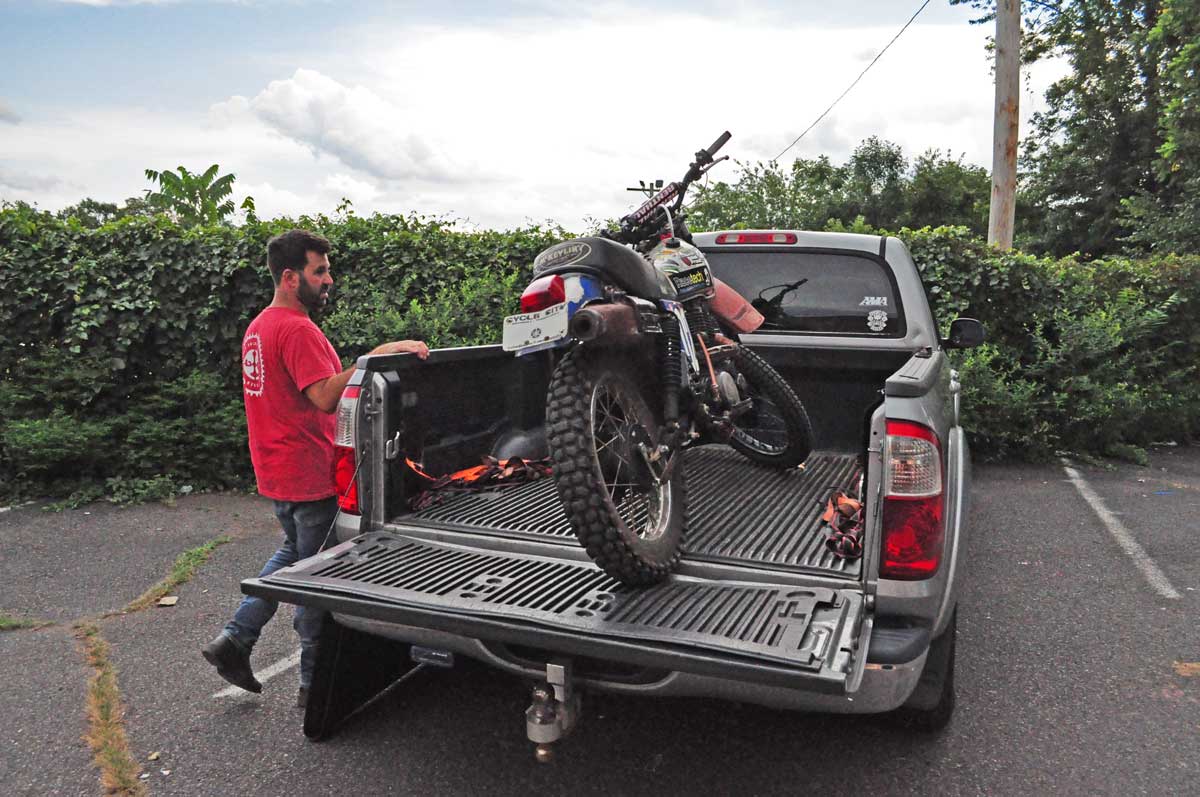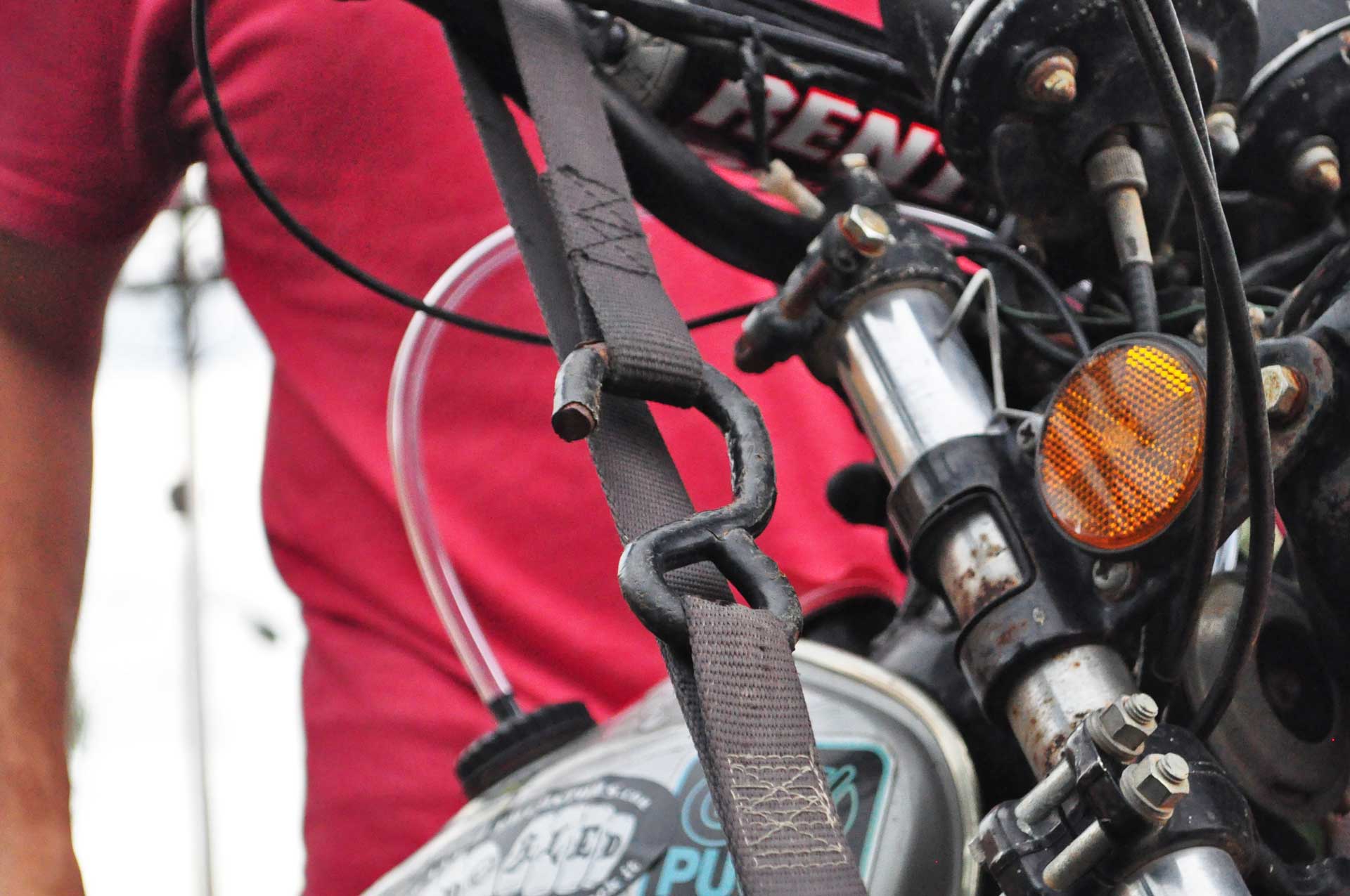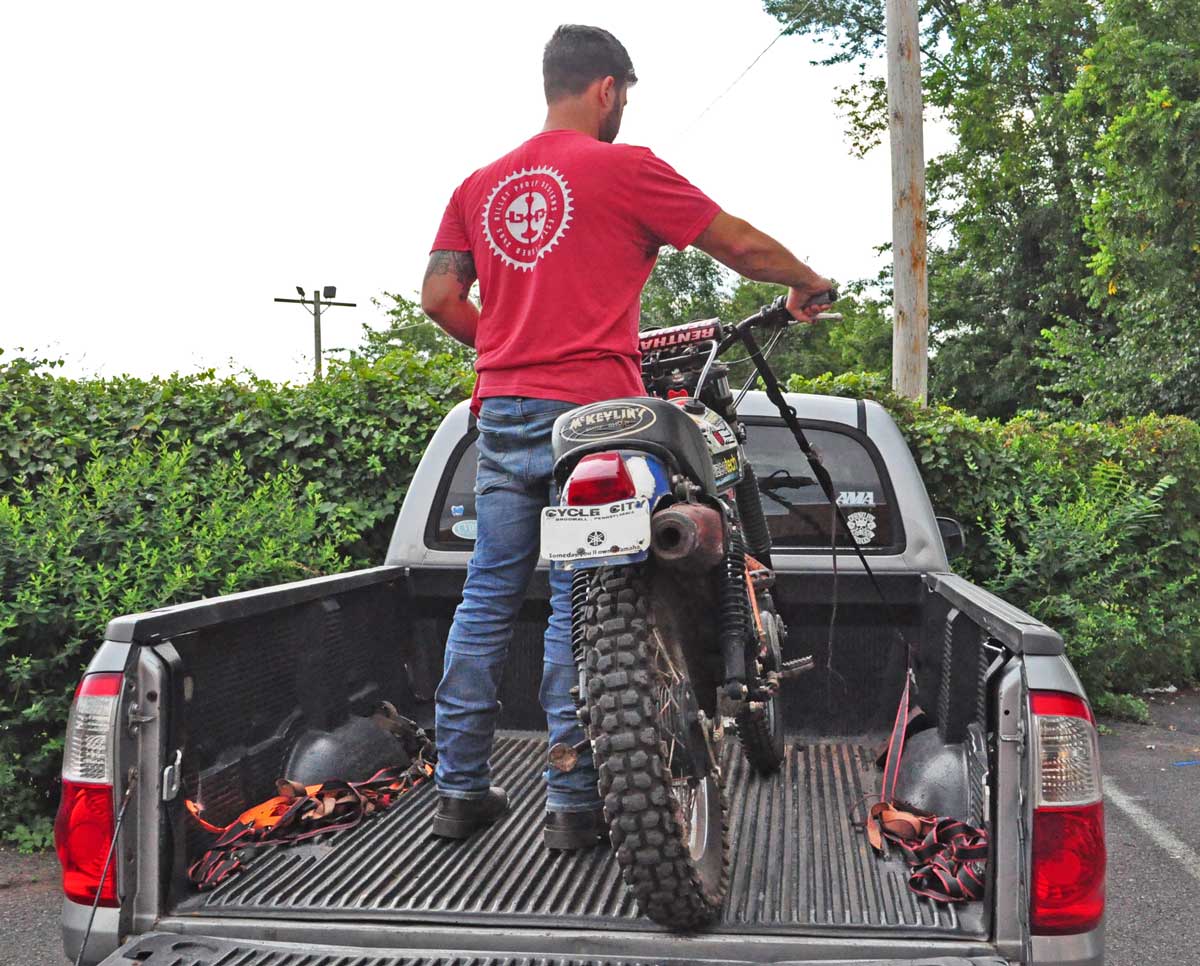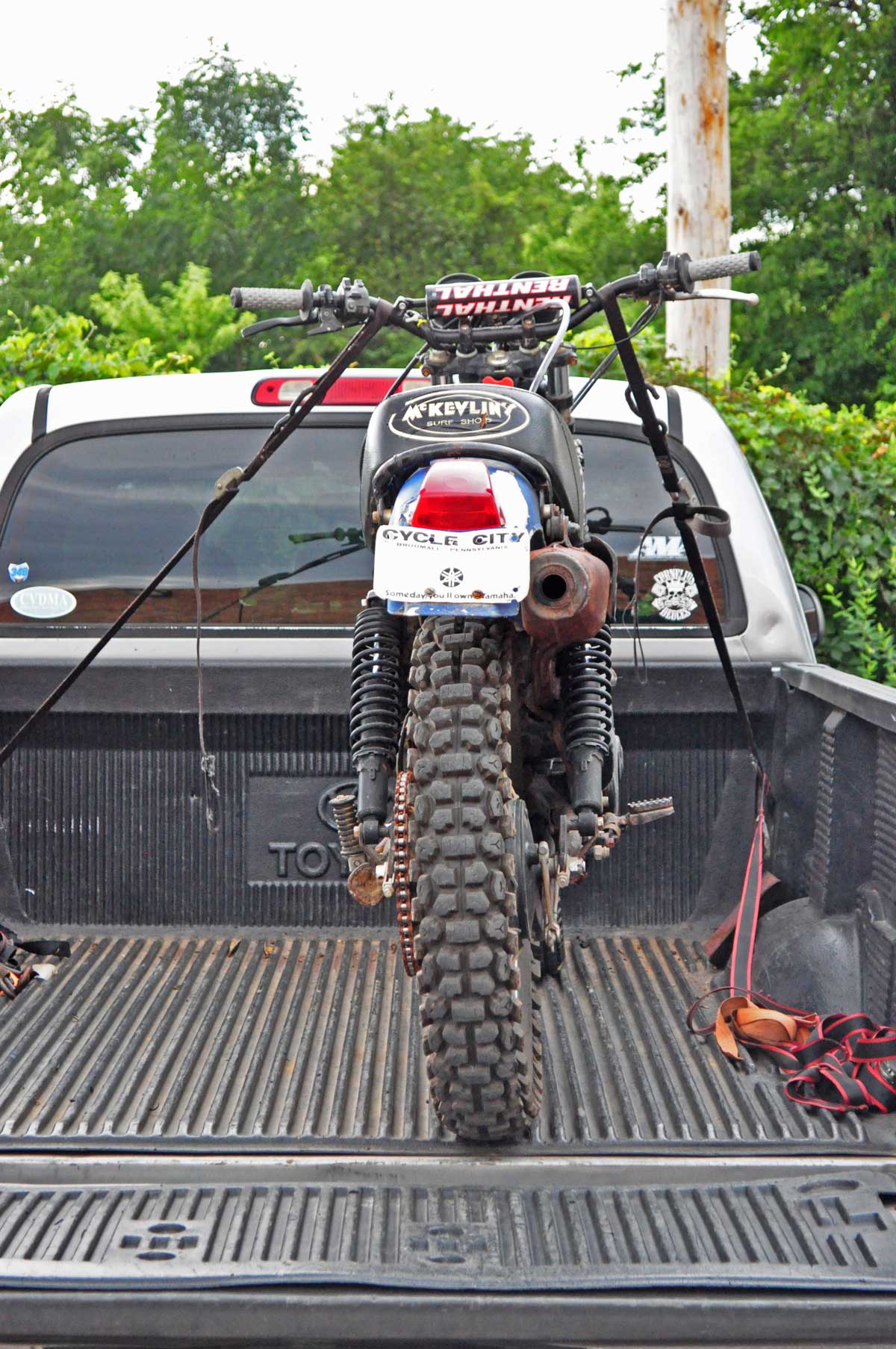How to Secure Your Motorcycle to a Trailer or Truck
Posted by Damian Ercole on 6th Aug 2019
The safety of you, your motorcycle, and others on the road depend on your ability to control the bike: this extends beyond riding.

Knowing how to properly secure your motorcycle on a trailer or into the bed of a pickup truck is as essential as knowing how to ride it. The last thing we want is to take a spill while riding but we also don’t want to have a bike pop out of the trailer while going 85+ on a crowded highway. It’s a bad scene. This post will show you the basics of securing your motorcycle. Just remember to take your time, double check what you’ve done and use tested, reliable equipment!
1. First thing's first, make sure the tie-down locations on the trailer, truck, or van are secure and have ample strength for what you will be securing. Also, be sure that the tie-downs you are using are rated for the correct weight load. If you're loading up something a little nicer than this war-torn Yamaha XT500 then we recommend keeping any tie-downs off of the handlebars themselves unless you have something like the Powerstands Racing® PSR Motorcycle Tie-Down Clamps available here in our online store.
2. After securing one of the tow hooks or ribbing to the tie-down point, place the other end of the strap in a location that you can reach while you are balancing your bike.
3. I prefer pull straps to secure my bikes as opposed to ratchet style tie-downs. The pull style straps are typically shorter and are much quicker to work with.
4. It isn’t always possible, but it’s best practice to have the front tire trapped in between something so it cannot accidentally rotate. Some motorcycle trailers have a wheel notch already there. Pickup trucks usually have ribbing that a tire can sit in between, or you can use a wheel chock. If you would like, it might make things easier if you put the bike in gear. This will keep the bike in position if you are on a slight incline. Obviously, you will need to put the bike back in neutral before rolling it back.
5. Grab one of the straps and secure to either the handlebar or the front fork tube above the lower triple tree. If securing to the handlebar you have a couple options. If you aren’t concerned with the finish you can place the hook directly to the handlebar. Some straps have an extra piece of strapping with a loop at the end. This can be used to wrap around the handlebar/fork tube and back onto the hook. This will help protect nice finishes. We also carry the Powerstands Racing® PSR Motorcycle Tie-Down Clamps available here which clamp directly to the frame or grip and have a protective foam barrier.


Either way you choose, be sure that no wiring or clutch/brake lines will be damaged when pressure is applied. NOTE: If you have a sport bike with a fairing, it may be necessary to use a Canyon Dancer. This will allow you to use the Canyon Dancer to secure the hooks as opposed to the handlebar or fork tube.
6. Once you have both ends of one strap secured, take the excess slack out of the strap. I like to lean the bike in the opposite direction that the strap is tied. This allows the bike to lean over and still be secured by the one strap. You can now let go of the bike and it won’t tip over.

7. Grab the other strap and secure to either the handlebar or the fork tube. Now take the slack out of this strap.
8. Now you have two straps on the bike, however they aren’t tightened down yet. Begin by pulling on the strap, that when tightened, will bring the bike closer to the vertical position.
9. There is no need to go He-Man on the straps and bottom out the front suspension. You only need to compress the suspension 2-3 inches to properly secure the bike. You may need to loosen/tighten the straps to bring the bike to straight up and down.

10. Give the bike a couple shakes taking note of the front wheel and the straps. Make sure that nothing moves, shifts or changes position.
11. While you generally do not have to secure the rear of the motorcycle, I would highly recommend it if you are hauling more than one bike side-by-side. On long trips, bumpy roads can cause the rear of the bike to skip around with the potential of contacting another bike. Using two additional straps at the rear of the bike will eliminate this. Just make sure that whatever you are strapping it is strong and will not be damaged.


